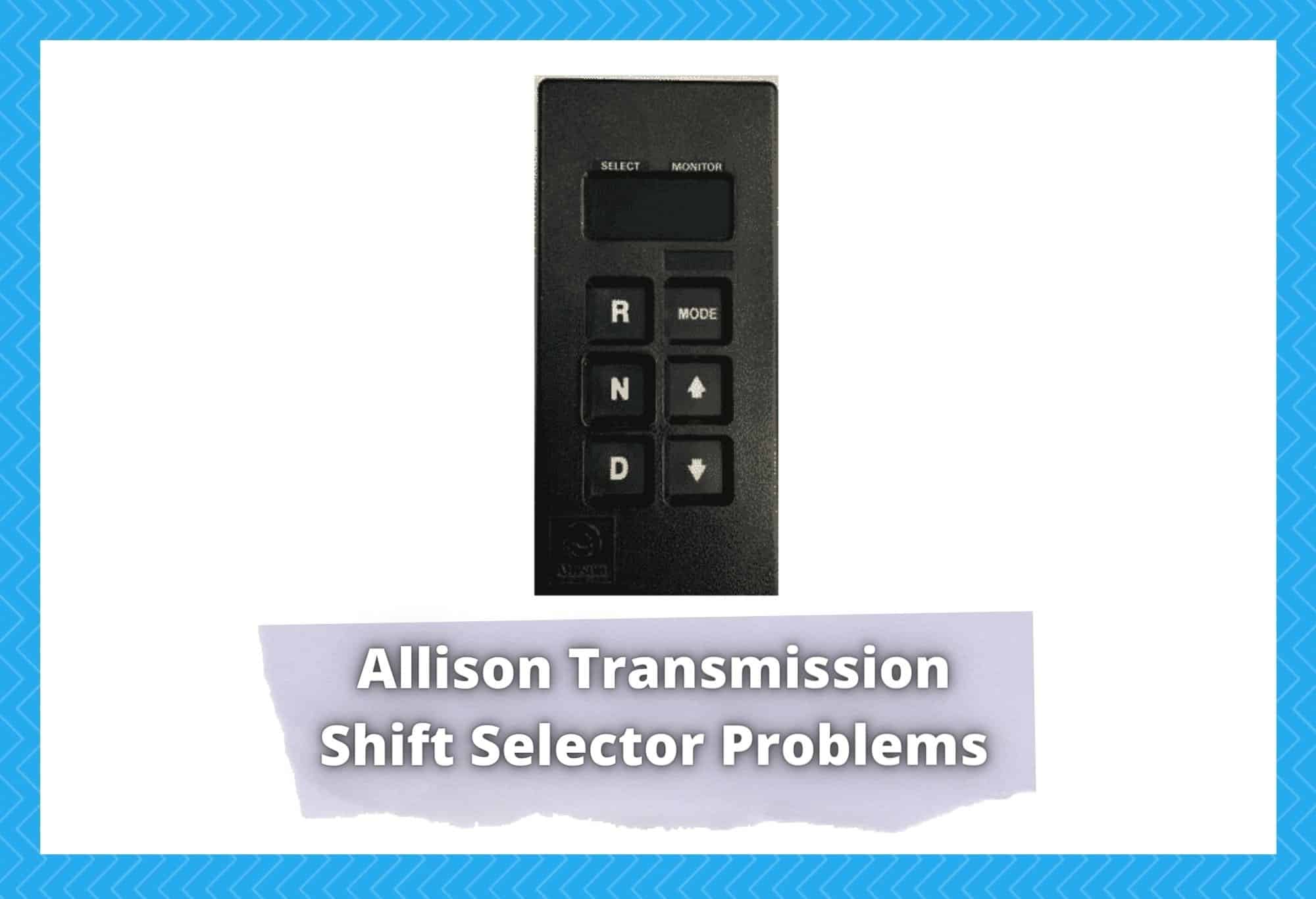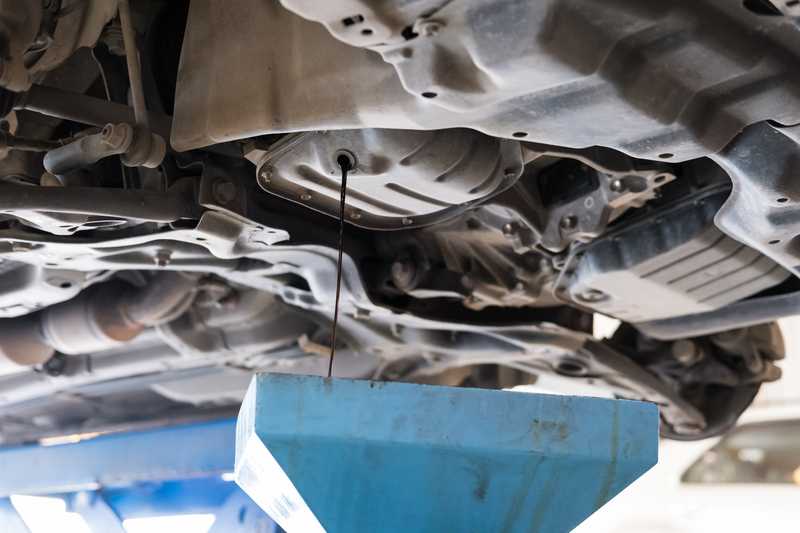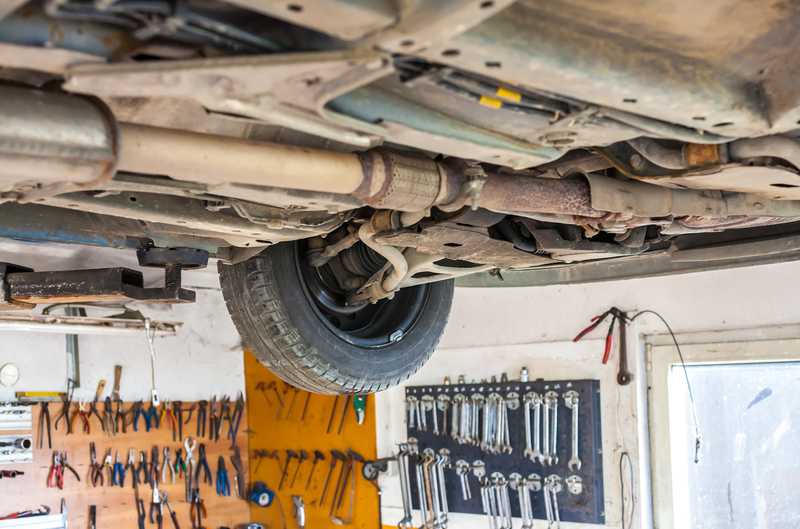
Allison is one of the largest transmission manufacturing companies. They’ve been producing commercial duty automatic transmissions and transmission parts for over a decade now.
The combination of durability, trust, cost-effectiveness, and transmission efficiency gives Allison Transmission the edge over its competitors. Most major brand vehicles use their brand of transmission in heavy-duty automobiles.
The fully automatic transmissions are used for a wide range of vehicles, from medium-sized Vans and RVs and commercial towing trucks.
There are seldom any problems that you’ll have to face if you got an Allison Transmission on the vehicle that you are using. However, not every ride is bound to be smooth, and some common problems can occur in older transmission shift selectors or gearboxes, especially if the transmission system isn’t maintained well.
It’s important to learn how to troubleshoot them properly to have the right experience for all sorts of driving experiences and needs you might have. We’ve discussed these problems in detail below, along with their fixes. So let’s get started!
Allison Transmission Shift Selector Problems
1) Delayed Shifting
One of the most common problems that you might have to deal with on automatic transmissions is delayed shifting. This is troublesome and annoying for all drivers, so finding the right solution for it is essential.
The delayed shifting can be caused due to a lot of problems, but the two main culprits are improper air intake and problems with the transmission oils . The transmission oil plays a key factor in running a smooth transmission as well as keeping the shift selector safe from friction damage. If there’s not enough transmission fluid supply to the clutches or bands, they won’t be able to operate instantaneously, causing this delay.
So, if you are facing a delay in shifting between the gears and you feel the vehicle is sluggish while shifting and accelerating, you will need to check on the transmission oil of your Allison Transmission.
It’s also important to make sure that there are optimally no leakages at all on the transmission oil pan and that the oil levels are normal. If not, you will need to top up the oil to an optimal level. This is necessary to make your vehicle run perfectly. Keep a schedule of when you need the transmission fluids on your car changed and use a higher grade oil.
2) Jerk While Shifting
Another unpleasant issue you can face that stems from a bad transmission are jerking while shifting gears. This typically happens when your transmission fluid has gunk in it, which is why flushing it and refilling is essential. You can figure out if the transmission fluid is dirty or not based on the color and thickness.
So, you will need to drain all the transmission oil from the transmission of your vehicle, then flush it with some cleaner to sort out that gunk problem. Afterward, you can replace the transmission oil properly with the right grade of oil.
To prevent jolts while shifting, you need to make sure that you replace the transmission oil when it’s due. Be sure to choose the appropriate grade of oil that is recommended by Allison Transmissions for your vehicle. This will help you solve any problem that you are facing with the jerks.
Changing the fluid and oils in your car is also important for preventing wear and tear of internal components that can lead to costly repairs.
3) Misalignment Of Gears And Lever
Another problem that you might have to face is that the gears are not properly aligned with the transmission shifter you have in the cabin of your vehicle. This is often caused after some transmission repair, and luckily, it’s pretty easy to fix.
The main reason behind this is that either the shifter cable in your automobile is too long or too short, and it’s important to get it aligned properly. You will have to take your vehicle to the dealership so that they can check the vehicle, inspect the shifter cable, and adjust the size as needed. The cable will be connected to the shifter present in the transmission.
4) Weird Noises
Now, it’s difficult to determine what sound your car or truck will make when you’re facing trouble with the transmission system and gearbox, but if you hear a sound that didn’t come from the shift selector before, then it’s likely there’s a problem with the transmission.
The sound effect varies between every make and model of the automobiles you own, but the most common indication of trouble is when you hear a lasting buzz, a whining noise, clunking, or persistent humming. Make sure that the sound isn’t coming from some other part like the tires or steering wheel.
If you’re sure the sound is coming from the transmissions selector, go to a mechanic so that the problem is diagnosed immediately. It’s likely from a leak of transmission fluid or some other issue that can’t be resolved at home.
In addition to this, if you’re driving an older vehicle with a manual transmission, then the sound emitted will be more abrupt and loud. You’ll hear mechanical clunking when you switch gears too. The noise may be coming from the underside of your car.
5) Stuck Gear
This is another automatic transmission problem many users face. The shift selector often fails to switch gears. If that happens, try engaging your vehicle’s clutch and moving the stick a bit. If that doesn’t work, check the transmission fluid of your car and ensure that it’s present at the right level. Transmission fluid should be clean too.
If you’ve recently filled the fluid and it’s clean and present in an appropriate amount, then there’s a chance you’ve added a thicker fluid than needed. Talk to your maintenance workshop about this.
If all’s well, then you can try having the clutch linkage and shift cables adjusted. Your vehicle’s computed system facing an error can also lead to gears being stuck.
Other than that, if your vehicle is having a difficult time moving between the neutral, reverse, and drive options, then there’s a problem with the transmission. Your vehicle should never hesitate to do what it’s told to, otherwise, that’s an indication of transmission failure.
If the fluid seems to be fine and there’s no problem with the shift cables, then you can reset your car. For this, you’ll need to detach the battery, letting it stand for about half an hour. Afterward, reattach it and allow for the system to reset. If this doesn’t work either, and the shift selector keeps getting stuck, then it’s time to find a mechanic.
6) Slipping Gears
Last on the list of problems is the transmission shift selector accidentally slipping into the wrong gear, either lower or higher. This can happen even if you’re driving at a constant speed. Sometimes, the gear will shift to a lower gear while you’re accelerating the vehicle, instead of moving into a higher gear with increasing speed.
Gears are prone to being worn out over time, especially when they are run inefficiently. Although Allison Transmission makes excellent quality products, if you run the transmission system too hot or keep using a worn-out fluid, then there would be wear and tear. This leads to gears not engaging properly, being out of sync. The gears keep slipping in and out while you drive or accelerate.
Another reason behind the slip is a failed torque converter. Torque converters are an integral part that convert the engine’s power into torque which is utilized by the transmission . It’s an essential component without which the wheels don’t receive power or turn.
Like other parts, torque converters can wear out over time. If the transmission fluid doesn’t flow through them properly, then you may face tons of problems like slipping, jumping gears, smoking and burning smells, etc. Getting in touch with a repair shop is essential.




